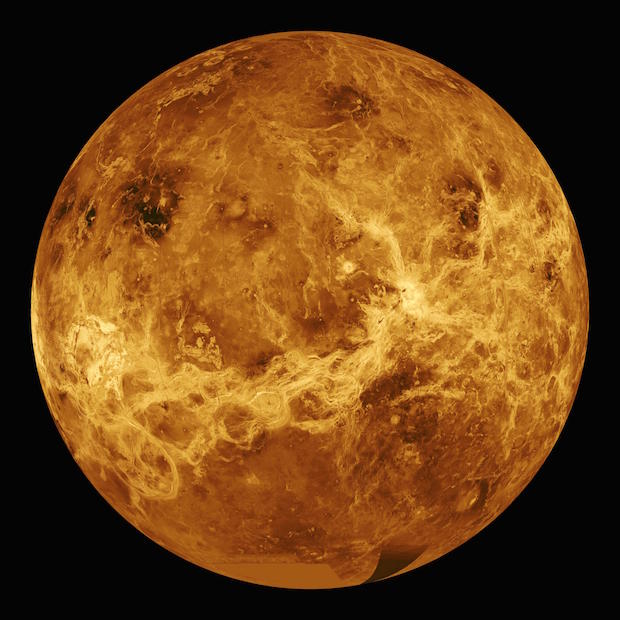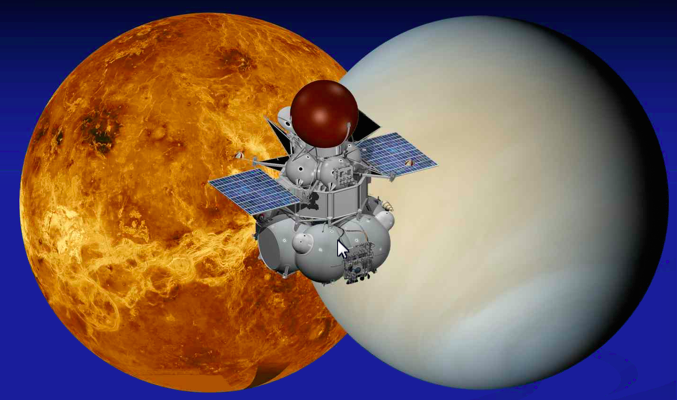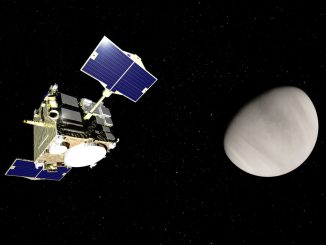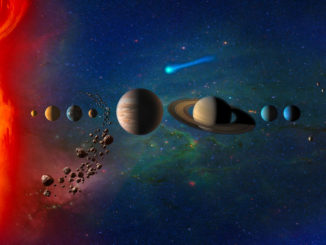
NASA has resumed discussions with Russia on a potential joint robotic mission to Venus in the late 2020s after the Ukraine crisis stalled the partnership, according to scientists involved in the talks.
Russian scientists have studied the Venera-D mission to Venus more than a decade as a follow-up to the Soviet-era Venera and Vega probes to the second rock from the sun.
Rob Landis, a program executive at NASA Headquarters, told a meeting of the Venus Exploration Analysis Group last month that the discussions are taking a “100,000-foot view” of the mission.
NASA has only committed to a year-long feasibility study, which will produce a report for top NASA and Russian managers to decide whether to pursue a cooperative mission to Venus, Landis said Oct. 27 at the VEXAG meeting in Washington.
The joint science definition team met in Moscow from Oct. 5-8, and scientists plan two more face-to-face meetings in the Russian capital over the next year. Scientists from the Moscow-based Space Research Institute, known by the Russian acronym IKI, are in charge of the Venera-D concept.
Russian officials envision the Venera-D mission as a combined orbiter and lander. Scientists are also studying whether the mission could accommodate a balloon to loiter in the Venusian atmosphere for several days, measuring the sweltering planet’s climate patterns and winds.
“We made a lot of progress,” said David Senske, a scientist at NASA’s Jet Propulsion Laboratory who is the U.S. co-chair of the Venera-D science definition team. “We heard a lot about what they had in mind. We’ve been told this is an IKI/Roscosmos endeavor, so they’re in the driver’s seat.”
Senske said the U.S. role in the science definition team is to steer the Venera-D mission’s objectives toward addressing NASA priorities and answering questions posed by the last planetary science decadal survey, a document published by the National Research Council that guides U.S. solar system exploration.
The October meeting came after the potential Venera-D partnership was put on hold following Russia’s annexation of Crimea in early 2014.
A U.S. government directive for NASA to curtail its cooperation with Russia in April 2014 excluded large projects, such as the International Space Station and Russia’s research instrument aboard the Curiority Mars rover. But the policy forced the Venera-D science definition team to suspend their work before it even started.

“Almost two years ago, NASA and Roscosmos decided to stand up a joint science definition team,” Senske said. “We had just gotten our work going when we were told stand down, but in August (of) this year, we were told we were back in business again.”
Russia’s federal space program initially included the Venera-D mission as a core component, assuring the project of Russian government funding. But Senske said the Russian space agency, Roscosmos, has now asked scientists to formally propose the Venera-D mission before it will be considered for full development.
NASA participation in the mission could reduce Venera-D’s cost to the Russian government, and IKI scientists have scaled back the scope of the mission.
The mission includes a spacecraft in a 24-hour orbit around Venus, and a probe that will descend through the planet’s smothering atmosphere and operate on the surface for up to several hours.
Russian scientists initially planned a more sturdy lander — the “D” in Venera-D stands for the Russian word for long-lived — but designing and building a spacecraft to survive for multiple days on Venus turned out to be too costly.
“When they looked at that in detail, they discovered that was a bridge too far. They wanted to get 24 hours or more (from the lander), but in order to fit into their cost envelope, they’re looking at more of a Vega-type lander,” Senske said, referring to the Soviet Union’s Vega missions to Venus in the 1980s.
Russia’s last Venus missions launched in 1984 after launching a series of Venus probes beginning in 1961.
The Venera-D lander would likely focus on atmospheric observations, surface imagery and composition measurements, and searching for volcanic activity. Venera-D’s orbiter would look at Venus’ upper atmosphere, cloud patterns, super-rotating winds and the planet’s runaway greenhouse effect, which gives Venus surface temperatures of nearly 900 degrees Fahrenheit (nearly 500 degrees Celsius).
Launch of the Venera-D mission will not occur before 2025, according to Lev Zelyony, IKI’s director, who was quoted in a story by Russia’s Interfax news agency.
Tasks for the science definition team include identifying the Venera-D mission’s science goals and technological needs. The discussions will also determine what NASA could contribute to the mission, assuming it goes forward.
A final report from the science definition team to NASA and IKI is due Sept. 30, 2016.
Email the author.
Follow Stephen Clark on Twitter: @StephenClark1.



